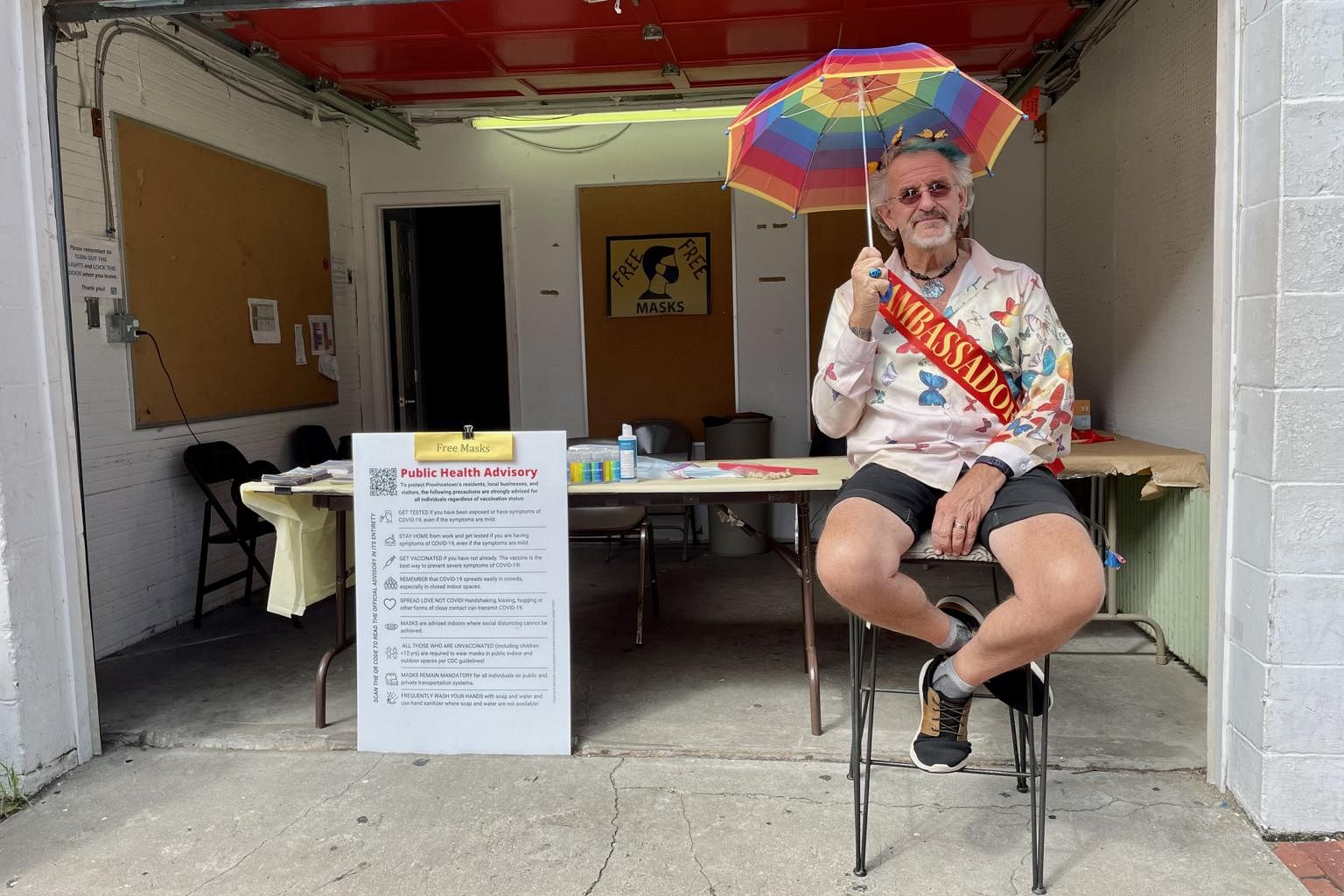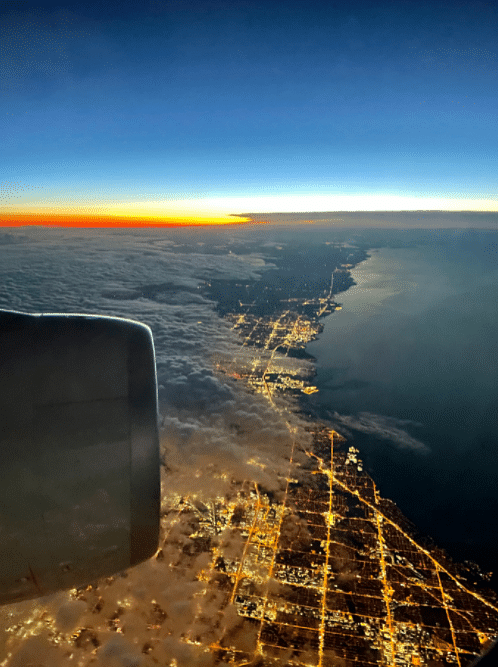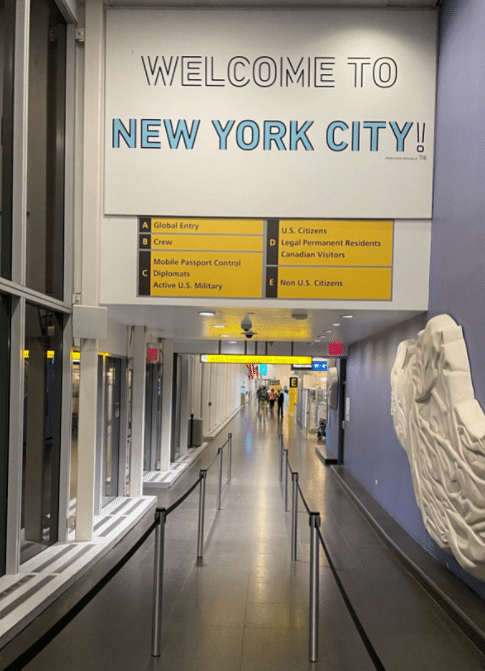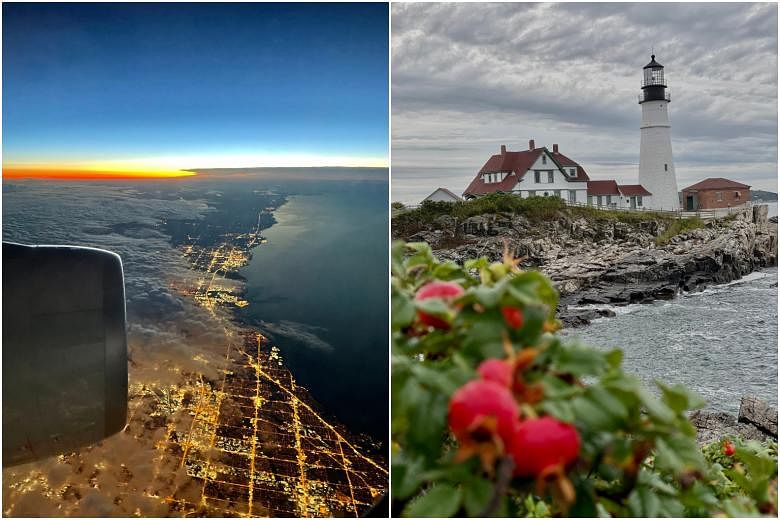TORONTO - It feels strange to travel again. Prior to the Covid-19 pandemic, when I averaged 70 flights a year, my luggage was subconsciously packed in minutes while flight itineraries were pieced together just hours before my departure.
In September, after 17 months of being grounded, I took an epic flight - stretching almost 19 hours - to New York. As the departure date neared, it felt unnerving to leave the comfort zone of Singapore to navigate a new world where Covid-19 rules continuously change.
A total of 38,396 Singapore residents took flights out of Singapore in August - three times the figure compared with a year ago, when 12,936 residents did so. But, in pre-pandemic Aug 2019, the figure was 626,076 residents, according to Immigration and Checkpoints Authority data.
My travel reboot started with a return to the revitalised New York City. My journey continued with a 10-day solo road trip spanning 2,600km - a distance equivalent to driving from Singapore to Chiang Mai - across the American north-east. This was followed by a flight from the United States to Toronto, Canada, for a business trip. North America was the start of an ongoing eight-month trip across 11 countries.
Dear traveller, the world has changed. Here is how to adapt to new ways of travel.
1. Attractive airfares, but new incidental expenses balloon
Airline seats remain plentiful and lower fares are readily available. I snagged a business-class round-trip ticket to New York for $6,800 - about 25 to 30 per cent lower than pre-Covid-19 times.
But the savings are quickly negated by expensive new items.
Travel insurance with Covid-19 cover is loaded with massive premiums. Worldwide travel insurance with Covid-19 coverage can cost a staggering $1,589 - this is as much as a round-trip economy-class ticket to the US - and the insurer caps the coverage at 182 days.
In pre-Covid-19 days, plain-vanilla travel insurance would cost about $550 for an entire year.
Another painful new reality - financially and physically - involves the pre-departure polymerase chain reaction test for Covid-19 that is now required by every country.
To prepare for my entry to the US, I took the swab test in Singapore. Such tests start at about $150.
Later, in New York's Newark airport, I swabbed again to prepare for travel to Canada - and paid a hefty US$250 (S$340) for a quick one-hour turnaround. Cheaper tests are available, but they will not be within the tight window for testing.
For my ongoing eight-month trip, my quick count is that I need about 20 tests - priced potentially at $4,000, and not counting the logistical struggles to time them right.

Factor in the possibility of quarantine expenses - and the big-ticket item is no longer the duty-free designer bag or sharp suit.
Pro tip: Do not leave home without travel insurance, especially Covid-19 cover. Contracting the virus overseas would mean the journey grinds to a halt.
"A positive reading means isolation for 10 days and more - even beyond 30 days if seriously ill - before enough viral load is shed to test negative again," advised a government infectious disease expert who requested anonymity.
Based on research, there are only two insurers which are providing Covid-19 cover for trips taken against official travel advisories - NTUC Income and Sompo Insurance. Read the fine print to ensure Covid-19 cover for your destinations.
2. The flying experience is still to be anticipated, but it is somewhat adulterated now
A huge part of the joy of travel is the journey itself. Now, anxiety swirls around the ever-changing travel rules. I got cold feet as I neared the departure date and contemplated a postponement.
At the airport, the Singapore Airlines (SIA) lounge was downsized, just like its food selection. Service, however, remained exemplary.
As I headed towards my gate, I spied intimidating signs showing that I was entering the restricted "Zone 1", where transit and local passengers converged. I steered clear of passengers and felt nervous - even more than the time I visited the still-radioactive Chernobyl nuclear reactor years ago.
"All passengers, including those from transit flights, have tested negative," a security officer assured me when I asked.
Entering the boarding room, I felt I was in a hospital, with the security personnel fully cloaked in personal protective equipment.
SIA has an integrated "safe and seamless" approach, from pre-flight updates and boarding to sanitised cabins and food safety.

Previously, it was easy to recognise individual cabin crew members within an hour of the flight. Now, with their masks, face shields, groovy protective eyewear and gloves, they were all perfect carbon copies - but that SIA smile still radiated through their masks.
In the past, I would face a dilemma when I pre-ordered meals. It was hard to decide what to eat when the menu was as long as a Christmas shopping list. Now, the abridged menu was just a shade more exciting than the McDonald's breakfast menu.
The elegantly plated multi-course meal was no longer served from a trolley, but everything was squeezed within an unglamorous tray. And, sadly, even the iconic garlic bread had lost some oomph.

But the crew was ever-attentive, making sure the service made up for the lost frills and a muted culinary experience.
Pro tip: Private space matters even more than ever. Block your preferred seats online as soon as you can and seek buffer space from the next passenger. When checking in, get an update in case someone has now edged into the empty seat to you.
On board, move to a more ideal bubble if necessary. Now, the first few rows of the business-class cabin are blocked off for the crew and the last few rows of economy/premium economy cabins are reserved for medical emergencies during flights. Sitting near the crew section is fine, but certainly give a wide berth to the on-flight "red zone" above.
3. A tale of two cities: An eerily empty arrival hall and another one with a snaking queue of hundreds
Usually overflowing with passengers, the international arrival hall of New York's John F. Kennedy airport was a ghost of its former self.
The US border clearance has a dreadful reputation of being long and unwelcoming. This time, passengers were few and they waltzed past the agents.

My eight-month trip piqued the border agent's curiosity.
For the first time, after some 30 visits to the US, I was ushered into a daunting holding room.
There, the sight of three other nervous travellers was not comforting, but I knew our profiles ticked different boxes.
The border control officer sat on a pedestal, like a judge towering over a delinquent. After I explained my zest for travel and showed my return ticket from the US, he looked at me in disbelief.
But when I showed the US$12,000 receipt for a bucket-list polar-bear tundra trip to Canada next month, he issued a coded pass for me to skip luggage inspection and waved me out quickly.
"You are a rare breed," he said. I am sure he was not referring to the receipt, but depicting me as a traveller taking a leap into the new normal.
In contrast, the Toronto airport in Canada had hundreds of arrivals, arrayed in snaking lines across its hall.

But the long lines moved fast. I scanned my passport at a machine, made my health and Customs declarations, and the machine cranked out a printout that I showed to the border agent.
Again, the polar-bear receipt did its magic and I was waved through with a code on my printout - another waiver from luggage inspection.
Pro tip: Currently, travellers are few and you will invite more scrutiny, especially if you are doing a solo trip.
Print out bookings to prove that you are a bona fide traveller with every intention to return home. Answers such as "I am not sure" are alarm bells at borders and airports.
Given the ongoing changes, do not be tempted to book heavily discounted hotel accommodation that come with restrictive cancellation policies.
Third-party booking websites will bait travellers aggressively with big discounts on non-refundable bookings. It is better to take a smaller discount and do a flexible booking.

4. Hotel services have shrunk, but not just because of safety measures
Over the two weeks of my New York stay, US road trip and first two nights in Canada, I stayed at nine hotels.
Hotels now seem to have two things in common. First, you may not get housekeeping even if your room is priced close to US$300 a night. You need to ask for it.
Second, the days of leisurely buffets or made-to-order breakfasts are now replaced by breakfast in brown takeaway bags. Hot breakfasts, if available, are spartan. Some even shut down their cafes completely and open only on weekends.
The reason: There is a shortage of casual workers in the US and Canada. While unemployment benefits may be lower than their previous take-home pay, many hotel staff have adjusted to more meagre ways and now spend prudently.
"They have adapted to a C$2,000 (S$2,140) lifestyle. Why do they want to work if they can be at the beach instead?" lamented a manager of a four-star hotel in Toronto.
Closed borders and other travel restrictions have also wiped out the influx of overseas workers or summer working-vacation students.
Pro tip: Hotel rates in the US have lifted off from their Covid-19 lows and some have returned to pre-Covid-19 rates. Stay at large chains to leverage their loyalty programmes and also get better service as they will maintain standards.
But as business travellers and tourists have not fully returned, it is easier to redeem a free stay.
For example, I redeemed a free stay award at the luxe Park Hyatt New York, which came with a butler-service trolley breakfast in my room plus full housekeeping. A paid night would otherwise cost in excess of US$1,100.
5. Eating away the blues: Covid-19 rules are there, but forgotten
Restaurants suffer from a shortage of staff as well.
In the smaller cities and towns, many restaurants are closed after Sunday lunch and may not reopen until Thursday.
Thankfully, in the lobster haven of Portland, Maine, the popular restaurants continued to operate as usual and ran full house every night. It was elbow-room sitting at the bar counters when I was there and diners blissfully forgot about the pandemic.

In the US, many Covid-19 requirements exist, but are not enforced. Masks are mostly mandatory indoors, but in New York City, there were maskless, recalcitrant locals who rode the subway.
Covid-19 vaccine certificates are a must to enter a restaurant, but only in theory.
Canada has just rolled out its vaccine passport in earnest. But the online declaration, which is wrapped around a series of questions every time you step into a building, is cumbersome.

So far, I have managed to steer clear of Covid-19. I avoid crowded places and use my elbows to tap lift buttons. I religiously use sanitisers to swipe the light switches, door handles and the television remote control after checking in.
But if the restaurant's seafood tank is brimming with appealing critters, my belly overrides my mind and I pretend the crowd is non-existent.
• After 11 staycations locally in the past year, the writer is venturing overseas for eight months with a business trip and revenge travel.

